In one of my undergraduate classes at Utah State University, we looked at arts and museums participation statistics. We talked about how many people had never been to a museum, the demographics of the people statistically most likely to visit museums, and the people mostly likely to not to visit museums. Then we talked about what might discourage people from coming into museums and the ways we might change museums or programming to be more inclusive and welcoming. Since I graduated and started working in museums, I’ve repeated that conversation over and over again at conferences, board meetings, and one-on-one conversations with colleagues. How to bring new people into museum spaces is just something the museum field never stops considering.
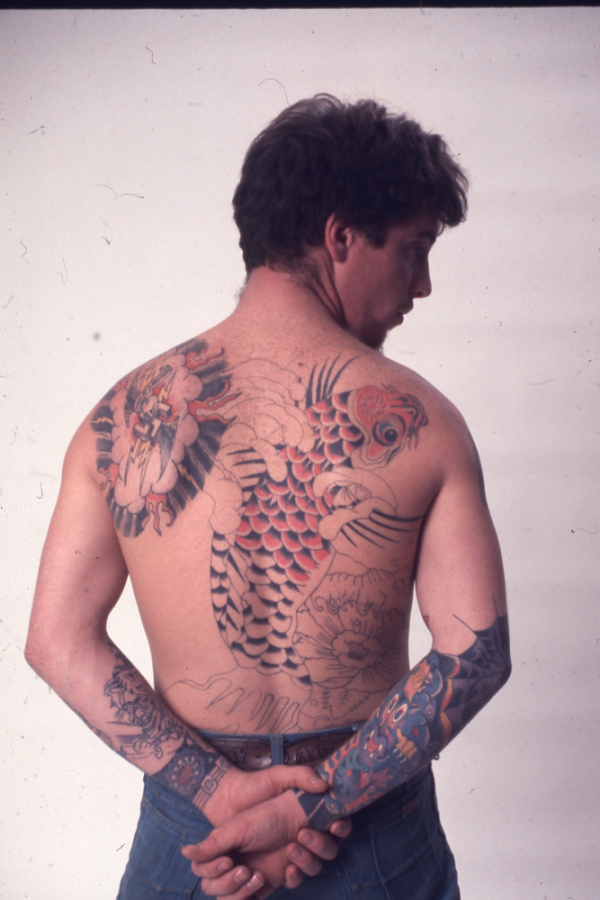
Tattoo on Paul Strange, photographed by Seymour Rosen, date unknown.
Seymour Rosen understood this need to expand museums’ audiences, but more importantly, he seemed to know how to do it naturally, in a way that wasn’t forced or overly targeted. He photographed things that he found interesting, beautiful, and artistic, and he put them in museums, even if they weren’t usually found there. And the fact that they weren’t usually things that were celebrated in museum spaces – motorcycle parts, art environments, costumes, parades, tattoos – was exactly what drew people in. Two stories demonstrate this perfectly: In Here We Are Now: The Ecology of Seymour Rosen and SPACES, Annalise Flynn wrote, “Interested not only in the evidence of people and their lives but also the activity of people and their lives, Rosen organized special days of attendance [at the San Francisco Museum of Modern Art], including one for visitors with tattoos. If you showed up at SFMOMA and revealed your tattoo at the ticket counter, you received free admission, and Rosen would be there to photograph your body art… Rosen proudly recalled [his exhibition] In Celebration of Ourselves and its corresponding events bringing in a ‘brand new crowd’ to the museum.” In a letter to Rosen dated January 16, 1977, someone recalled going to one of Rosen’s shows: “I sat down [on a bus] next to a guy who looked like he’d rather be on a motorcycle than a bus. I told him…I was going to the Museum of Modern Art to see a show that included painted gas tanks from choppers. He flipped ‘you’re kidding.’ ‘No, for real.’ So he came along with me to the museum…This was the first time he had ever been inside a museum…I could hardly get him out of there.”
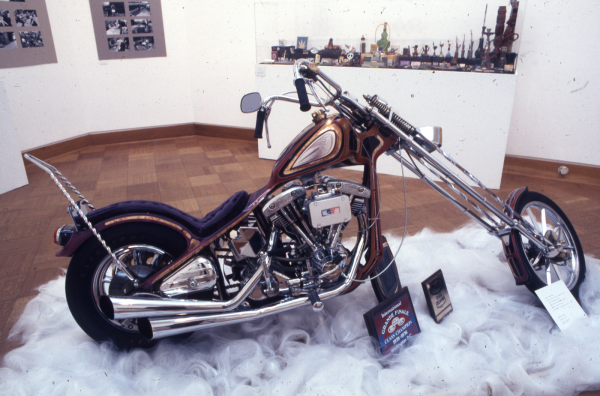
Gallery shot, ICOO, SFMOMA, January 1977
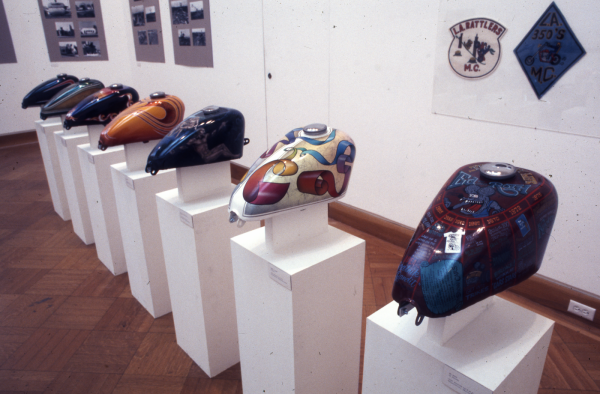
Gallery shot, ICOO, SFMOMA, January 1977
These two stories demonstrate a few specific things that Rosen did that could make a difference in expanding museum access and inclusion. First, he organized shows of familiar and interesting art that people felt they could understand. This isn’t to say we should toss all the Abstract Expressionists out the window, but perhaps Rosen would suggest we display more accessible art alongside them. Rosen also found ways to remove barriers of cost, providing alternatives to paying admission, like showing a tattoo to get in, that allowed more people to visit his shows. In this example, he also photographed the tattoo, making the viewer a part of the project. He made the visitors feel like they were part of the exhibit as they effectively brought in more art on their own bodies.

Decorated motorcycle painted by David "DIVER" Steinel, photographed by Seymour Rosen, Berkely, CA, 1972
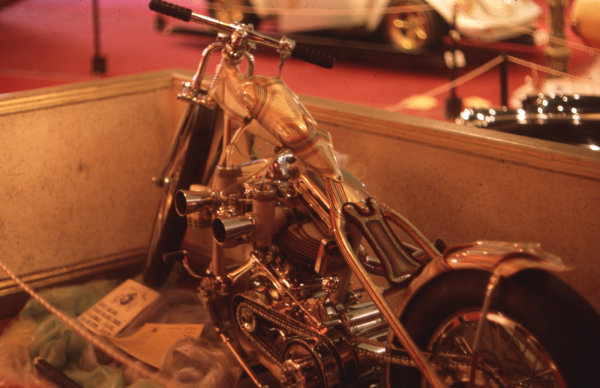
Decorated motorcycle, photographed by Seymour Rosen, June, 1969
Museums are always looking for ways to feel less stodgy, less restrictive, and less hallowed. To do so, they (we) need to become more open, more welcoming, more free, more fun, more easily talked about, more inviting. We should take a page out of Seymour’s book. Let’s have more shows about motorcycles and tattoos, or maybe legos and graphic t-shirts. Let’s invite people to bring their own creations in for display. Finally, let’s bring people in with us as we come in on the bus or the train. Let’s not just leave it all up to the artists, but lead the way as curators and museum professionals.
Kaily Carson is the 2024 SPACES summer intern. She is pursuing a master’s degree in art history at the University of Wisconsin - Milwaukee. Prior to this, she worked as the curator at the National Orphan Train Complex in Concordia, Kansas. She earned her bachelor’s degree in art history at Museum Studies at Utah State University and has also worked at museums such as the Nora Eccles Harrison Museum of Art in Logan, Utah and the Journey Museum in Rapid City, South Dakota.
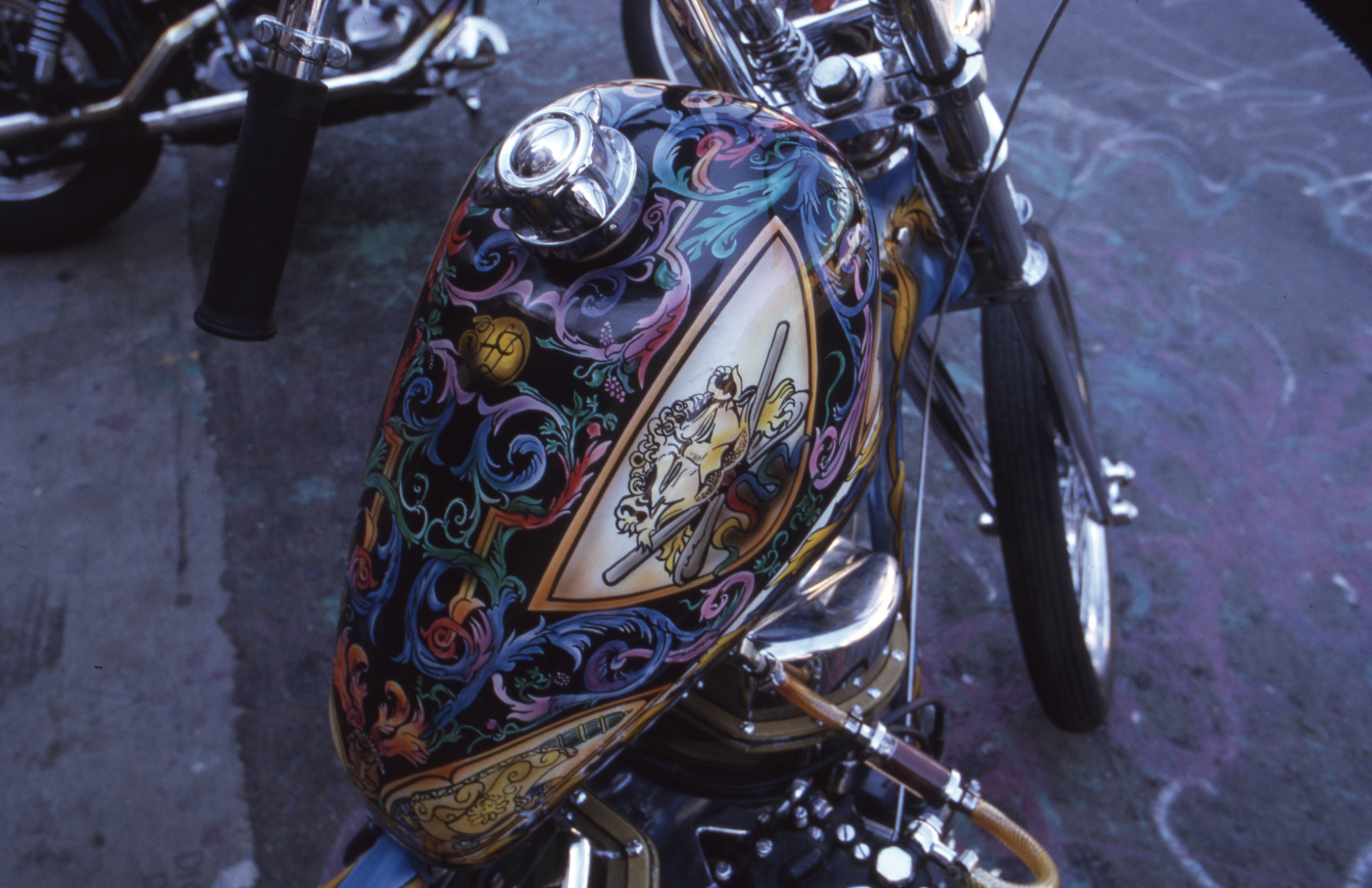

Post your comment
Comments
No one has commented on this page yet.